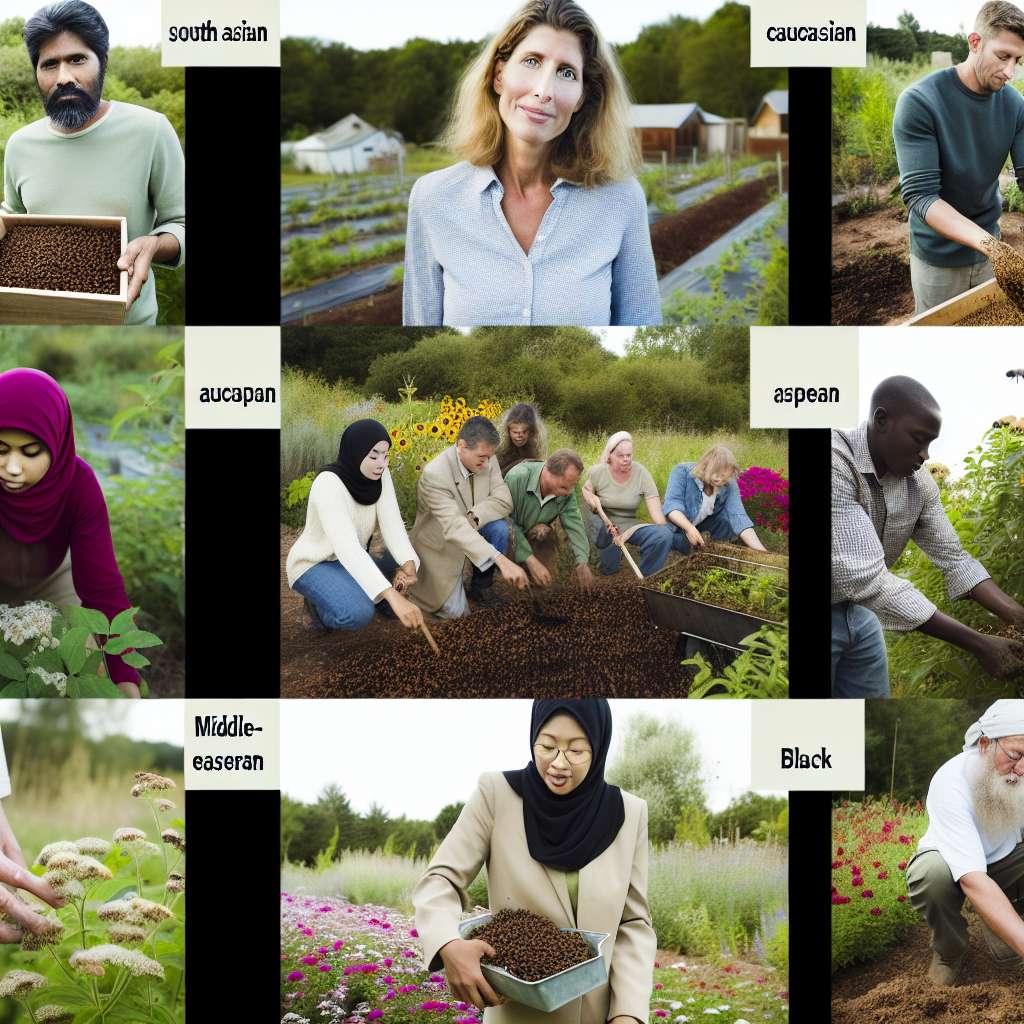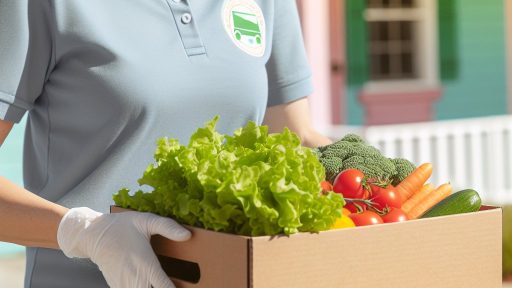Introduction to Permaculture and Its Role in Pollination
Permaculture is a sustainable design system for agricultural and social environments.
This approach mimics natural ecosystems to maximize efficiency and harmony.
At its core, permaculture emphasizes diversity, which enhances resilience.
This diversity plays a critical role in pollination and plant health.
Pollinators, like bees and butterflies, thrive in diverse environments.
They need a variety of plants to provide nectar and pollen throughout the seasons.
Permaculture practices support these essential creatures by creating habitats.
Structured landscapes help ensure year-round food sources for pollinators.
These practices include companion planting and establishing flowering zones.
Additionally, permaculture promotes organic methods that encourage biodiversity.
This creates a more balanced ecosystem, which aids plant health.
Healthy plants are more resilient to pests and diseases.
Thus, permaculture practices ultimately contribute to sustainable food production.
Furthermore, these methods can increase yields over time.
In summary, permaculture fosters a harmonious relationship between plants and pollinators.
Transform Your Agribusiness
Unlock your farm's potential with expert advice tailored to your needs. Get actionable steps that drive real results.
Get StartedThis relationship enhances agricultural productivity and ecological integrity.
Understanding Pollinators: Types and Their Importance in Ecosystems
Overview of Pollinators
Pollinators play a crucial role in ecosystem health.
They facilitate the reproduction of flowering plants.
This process supports food production and biodiversity.
Types of Pollinators
Bees are among the most effective pollinators.
They transfer pollen as they collect nectar from flowers.
Butterflies also contribute significantly to pollination.
They are attracted to bright colors and sweet scents.
Additionally, birds, especially hummingbirds, help in pollination.
They visit flowers for nectar, spreading pollen in the process.
Other pollinators include bats and some insects like beetles.
Importance of Pollination
Pollination supports plant diversity in ecosystems.
This diversity enhances resilience against environmental changes.
Moreover, pollination is vital for food production worldwide.
Approximately one-third of the food we consume relies on pollinators.
Threats to Pollinators
Habitat loss poses a significant risk to pollinator populations.
Climate change alters their natural environments.
Additionally, pesticide use negatively impacts their health.
Declining pollinator numbers threaten global food security.
Conservation Efforts
Supporting native plants can enhance pollinator habitats.
Creating gardens that attract pollinators is also beneficial.
Community awareness and education promote conservation practices.
Effective policies can protect pollinator-friendly environments.
Designing Pollinator-Friendly Garden Layouts
Choosing Native Plants
Native plants attract local pollinators effectively.
Showcase Your Farming Business
Publish your professional farming services profile on our blog for a one-time fee of $200 and reach a dedicated audience of farmers and agribusiness owners.
Publish Your ProfileThey provide essential food sources for bees and butterflies.
Furthermore, these plants are adapted to local climates.
This means they require less water and maintenance.
Creating Diverse Plantings
Diverse plantings support a wider array of pollinators.
Combine flowering plants with different bloom times.
This ensures a continuous food supply throughout the seasons.
Additionally, include plants of various heights for nesting options.
Incorporating Pollinator Habitats
Incorporate habitats like bee hotels and native shrubbery.
These structures provide essential nesting sites for solitary bees.
Moreover, leaving some areas untidy supports ground-nesting bees.
Use logs and branches to create natural shelters for insects.
Designing Open Spaces
Pollinators thrive in open, sunny areas.
Position flowering plants where they receive ample sunlight.
Minimize shaded areas to promote pollinator activity.
This creates an inviting environment for pollinators to thrive.
Implementing Water Features
Water sources are crucial for pollinator health.
Incorporate shallow water dishes or small ponds.
Ensure these water sources are easily accessible.
Additionally, add stones for landing spots to support pollinators.
Avoiding Pesticides
Pesticides can harm beneficial pollinators.
Opt for organic pest control methods when necessary.
Use companion planting to deter pests naturally.
This practice protects the well-being of pollinator populations.
You Might Also Like: Organic Cover Cropping Strategies for Soil Fertility
Companion Planting: Pairing Plants to Enhance Pollination
Understanding Companion Planting
Companion planting involves strategically placing plants together.
This method encourages beneficial relationships among plants.
Moreover, it promotes pollination and overall plant health.
Enhancing Pollination with Strategic Pairings
Plants can benefit from being close to certain companions.
For example, marigolds attract pollinators like bees.
Similarly, basil complements tomatoes, enhancing their flavor.
Another effective pairing is corn and beans; beans fix nitrogen in the soil.
Improving Pest Management
Companion planting can deter pests naturally.
For instance, planting garlic near roses protects them from aphids.
Additionally, herbs like rosemary repel harmful insects when paired with vegetables.
These natural deterrents lead to healthier plants and yields.
Creating Biodiversity in Your Garden
Diverse plantings support various insects and wildlife.
This biodiverse environment fosters an ecosystem that benefits plant health.
Ultimately, it attracts more pollinators, increasing overall productivity.
Practical Tips for Successful Plant Pairing
Research which plants thrive together before planting.
Keep record of your combinations to refine your approach over time.
Showcase Your Farming Business
Publish your professional farming services profile on our blog for a one-time fee of $200 and reach a dedicated audience of farmers and agribusiness owners.
Publish Your ProfileAdditionally, consider seasonal changes that affect plant growth.
- Choose native plants to enhance local biodiversity.
- Experiment with new combinations each growing season.
- Monitor the health and growth of companion plants regularly.
By incorporating these practices, you can optimize your garden’s health.
Learn More: Why Food Traceability Is Essential for Organic Farming Standards
Creating Habitat for Beneficial Insects
Importance of Beneficial Insects
Beneficial insects play a crucial role in pollination.
They help maintain plant diversity and ecosystem health.
Additionally, these insects contribute to natural pest control.
Types of Beneficial Insects
Beetles are essential for soil health and pest management.
Bees are premier pollinators, increasing fruit and seed production.
Butterflies not only pollinate but also add beauty to gardens.
Creating Attractive Habitats
Planting a variety of flowering plants can attract beneficial insects.
Choose native plants that thrive in your local environment.
Additionally, include plants that bloom at different times of the year.
Establishing Shelter and Refuge
Provide shelter using brush piles, rocks, and wooden structures.
These habitats will protect insects from predators and harsh weather.
Moreover, maintaining minimally disturbed areas can support insect populations.
Minimizing Pesticide Use
Reduce pesticide use to protect beneficial insect populations.
Instead, focus on integrated pest management strategies.
Utilizing organic methods will also promote a healthier ecosystem.
Learn More: Best Practices for Local Food Sourcing on Farms
Soil Health and Its Impact on Plant Health and Pollination
The Importance of Soil Microorganisms
Ssoil microorganisms play a crucial role in ecosystem health.
They decompose organic matter and recycle nutrients.
Moreover, they improve soil structure and water retention.
Healthy soil microorganisms enhance plant growth and resilience.
Therefore, consider using compost to boost microbial activity.
Organic Matter and Soil Structure
Organic matter significantly affects soil structure.
It increases porosity and aeration within the soil.
As a result, roots can penetrate deeper and access nutrients.
Additionally, enhanced soil structure promotes better water retention.
This helps to sustain plants during dry periods.
Nutrient Availability and Plant Growth
Nutrient-rich soil supports vigorous plant growth.
Different plants require varying nutrients for optimal health.
For instance, legumes fix nitrogen in the soil.
Adding organic fertilizers can also enhance nutrient levels.
Healthy plants attract more pollinators to the garden.
The Relationship Between Soil Health and Pollination
Soil health directly impacts pollinator abundance and activity.
Pesticide-free and organic farming encourages pollinator visits.
Diverse plant species in gardens also attract various pollinators.
By promoting soil health, you foster a vibrant ecosystem.
This ultimately supports crop yield and biodiversity.
You Might Also Like: Effective Communication in Community Supported Agriculture
Showcase Your Farming Business
Publish your professional farming services profile on our blog for a one-time fee of $200 and reach a dedicated audience of farmers and agribusiness owners.
Publish Your Profile
Seasonal Planting Strategies to Ensure Continuous Bloom for Pollinators
Why Seasonal Planting Matters
Seasonal planting supports healthy ecosystems and vibrant gardens.
It attracts beneficial insects and improves plant health.
Moreover, it ensures that bloom time extends throughout the growing season.
Choosing the Right Plants
Selecting native plants boosts local pollinator populations.
Natives are adapted to the local environment and thrive with less care.
Consider including flowers that bloom at various times of the year.
Spring Planting Strategies
Begin the year with early-blooming flowers.
Crocus and snowdrops are excellent choices in spring.
These plants support the first pollinators emerging after winter.
Summer Planting Techniques
Incorporate a variety of summer-blooming plants such as coneflowers and black-eyed Susans.
These flowers attract bees, butterflies, and hummingbirds.
Additionally, stagger planting times to ensure a continuous bloom.
Fall Planting Recommendations
Choose late-blooming flowers like asters and goldenrods for the fall.
These plants provide crucial food sources for pollinators before winter.
Also, consider including herbs that continue blooming into the fall.
Creating a Pollinator-Friendly Garden
Design garden beds with diverse plantings to maximize blooms.
Utilize companion planting to promote mutual benefits among species.
Incorporate layers of plants for increased habitat complexity.
Maintaining Your Blooming Schedule
Regularly monitor your garden’s growth and health.
Remove any dead or diseased plants to keep the ecosystem vibrant.
Additionally, keep notes on bloom schedules for future plantings.
Utilizing Native Plants to Attract Local Pollinators
Importance of Native Plants
Native plants play a crucial role in attracting local pollinators.
They provide the food and habitat that these essential creatures need.
By fostering native species, you support local ecosystems.
Choosing the Right Native Plants
Select a variety of native plants for your garden.
Consider flowering plants that bloom at different times.
This strategy creates a continuous food source for pollinators.
Furthermore, choose plants that are well-adapted to your local climate.
Creating a Pollinator-Friendly Habitat
Design your space to encourage diversity among plant species.
Group similar plants together to create vibrant patches.
In addition, leave some areas of your garden untamed.
This serves as natural habitats for pollinators and beneficial insects.
Implementing Companion Planting
Pair native plants with other crops to enhance biodiversity.
For example, plant pollinator-friendly flowers among vegetables.
This method supports both plant health and productive yields.
Maintaining the Native Plant Garden
Regular maintenance is vital for the health of your garden.
Monitor plants for pests, but avoid harmful pesticides.
Instead, use natural pest control methods that protect pollinators.
Additionally, ensure proper watering and soil health to sustain growth.
Implementing Water Sources and Shelter for Sustainable Pollinator Habitats
Importance of Water Sources
Water plays a crucial role in supporting pollinator health.
Showcase Your Farming Business
Publish your professional farming services profile on our blog for a one-time fee of $200 and reach a dedicated audience of farmers and agribusiness owners.
Publish Your ProfileIt provides hydration and sustenance to various species.
Incorporating water sources enhances the biodiversity of your garden.
Moreover, it attracts pollinators like bees and butterflies.
Consider installing small pools or birdbaths for this purpose.
Ensure the water remains clean and fresh for visitors.
Designing Pollinator-Friendly Shelters
Creating shelters offers protection for pollinators against predators.
Provide diverse habitats for different species to thrive.
Use natural materials like wood and straw for building shelters.
Construct bee hotels to attract solitary bee species.
Introduce plants that provide nectar and pollen sources nearby.
Furthermore, incorporate varying heights and openings in your design.
Selecting Suitable Plant Species
Choose plants that bloom at different times throughout the year.
This strategy ensures food availability for pollinators across seasons.
Native plants often attract local pollinators more effectively.
Consider adding flowers like lavender, sunflowers, and coneflowers.
These plants offer both beauty and essential resources.
Creating a Balanced Ecosystem
A balanced ecosystem promotes overall garden health.
Encourage the presence of both pollinators and beneficial insects.
This balance reduces pest problems naturally.
Implementing companion planting can enhance plant relationships.
Additionally, providing mulched areas offers shelter and moisture retention.
Embrace diversity in your planting strategies for optimal results.
Additional Resources
Veganism and Permaculture Regenerative Farming… : r/Permaculture
“There is No Straight Line to a Just Food System”: What We Do with …




